Background and context
Smart grids are energy networks that can automatically monitor energy flows and adjust to changes in energy supply and demand accordingly. When coupled with smart metering systems, smart grids reach consumers and suppliers by providing information on real-time consumption.
As smart grids show information on supply and demand, they are particularly beneficial for the integration of growing amounts of variable renewable energy sources, like solar and wind power, and of new loads, such as energy storage and charging of electric vehicles, while maintaining stability and efficiency of the system. In addition, smart grids open up the possibility for consumers who produce their own energy to respond to prices and sell excess amounts back to the grid.
Smart grids enable new market actors, such as aggregators and energy service companies, to offer new types of services to consumers, allowing them to adjust their consumption and reap the benefits of flexibility provided to the grid.
Our role and products
We assess research, development and innovation issues for the deployment of solutions enabling the integration of renewables, storage and electric vehicle (EV) solutions in the energy system.
This page hosts analyses and insights from the JRC rolling reviews of smart grid projects, performed in cooperation with policy, regulatory, industrial and research partners since 2011. Some previous editions were accompanied with visualisation tools tracking progress on smart grid projects. The JRC also produced smart grids reports in the context of the Clean Energy Technology Observatory (CETO), targeting specific smart grid tehcnologies (e.g. smart meters, power electronics for HVDC, etc).
Please note that the JRC smart grid scanning exercises cannot be directly paralleled a.o. for the following reasons: the classification/clustering of projects changed over time; selected projects were promoted - and thus added to the database - later in their lifetime or even after their completion; some projects faced modifications during their execution (in terms of budget, end dates etc.) and therefore have had to be duly updated.
The following maps display data gathered for the 2017 JRC smart grid report. The 2017 JRC smart grid projects outlook includes a total of 950 smart grid projects, launched from 2002 up until 2015, amounting to €5 billion investment.
Smart grid projects database
2020 data refers to EU co-funded smart grid projects as described and analysed in the 2021 Report: Smart Grids and Beyond: An EU research and innovation perspective.
2017 data includes both national/EU/private investments on smart grid projects as described and analysed in the 2017 Smart grid projects outlook.
Smart grid projects summary facts and figures
These facts and figures refer to data described and analysed in the 2017 Smart grid projects outlook.

Main publications
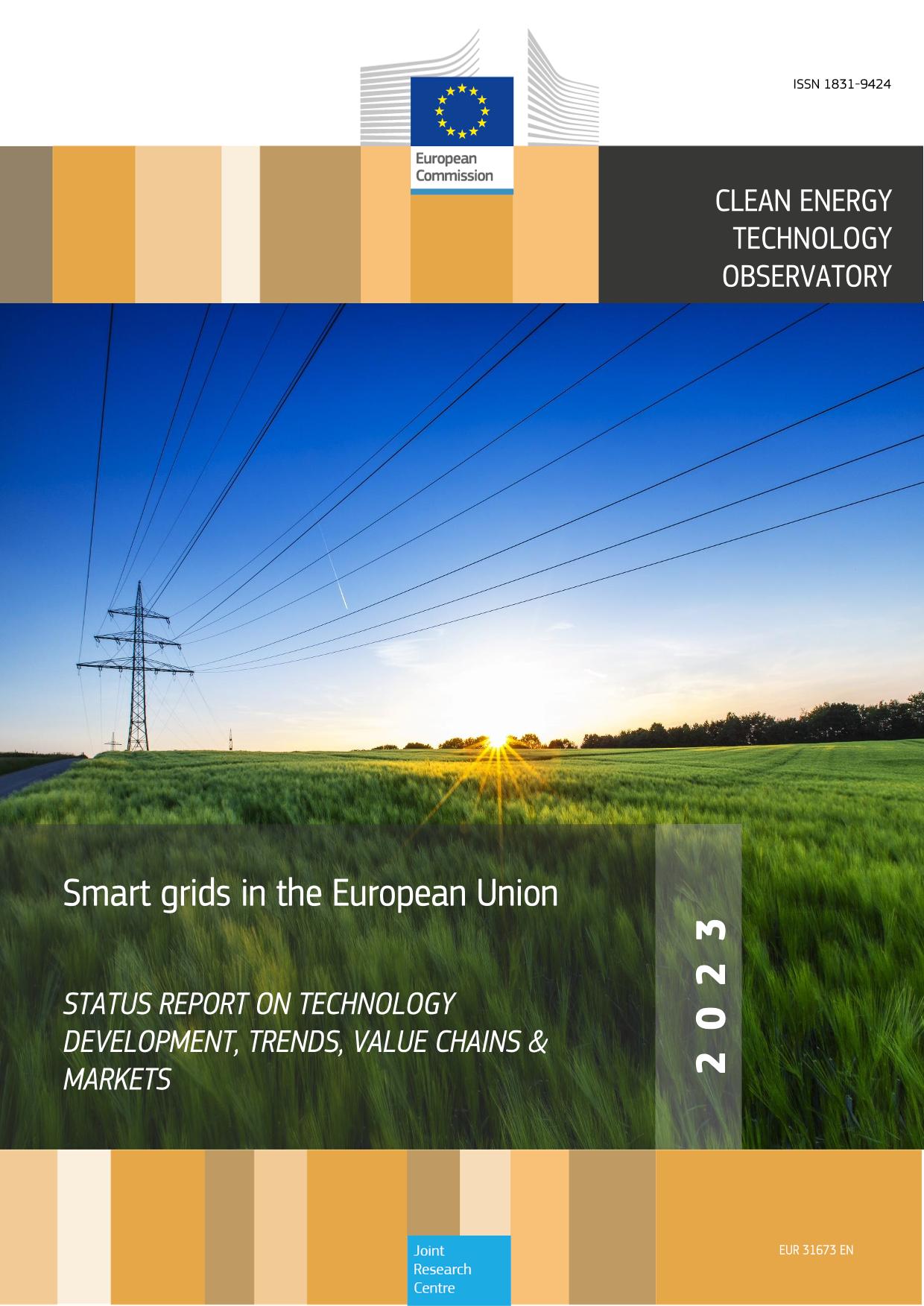
2023 - Clean Energy Technology Observatory: Smart Grids in the European Union - 2023 Status Report on Technology Development Trends, Value Chains and Markets
This document provides an overview of the latest technological and market trends on the topic of Smart Grids in the European Union. Given the broad scope of the topic, the analysis has focused on two fundamental enabling technologies: High Voltage Direct-Current (HVDC) connections and Smart Metering Infrastructure. The choice of analysing HVDC recognizes the fundamental role that the network infrastructure will play in the smooth integration of new renewable sources and in the support to an efficient operation of a decarbonized grid, whereas the focus on Smart Metering Infrastructure is meant to highlight its relevance in the upgrade of the energy grid, with numerous smart meter rollout plans worldwide. For each of these two topics, the current status is reported in terms of technology developments and trends, value chain analysis and global competitiveness.
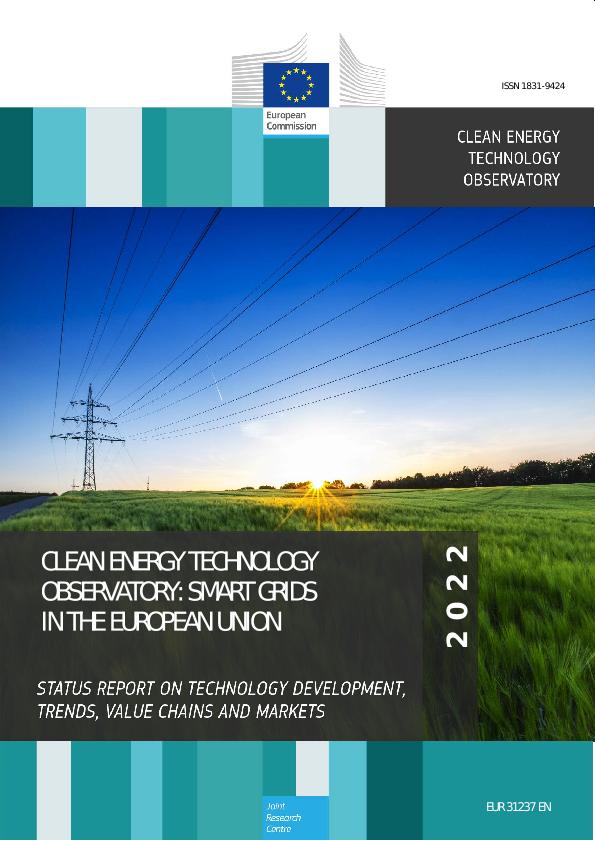
2022 - Clean Energy Technology Observatory: Smart Grids in the European Union – 2022 Status Report on Technology Development, Trends, Value Chains and Markets
Current policies aim at a fundamental decarbonisation of the European economy which is still too dependent on fossil fuels. Electrification based on renewable energy production is considered to be the most effective way to tackle this issue. As a result, electricity demand is projected to increase significantly on a pathway towards climate neutrality. It is well known that increasing the current level of renewable based production is however not enough: such a production needs to be integrated into the energy system by means of a smarter grid infrastructure deeply based on digital and interoperable solutions. In this report, the focus is on the role played by a subset of enabling technologies in the smart grids sector: Transmission innovation (TI), Grid-scale storage services (GSSS), Electric vehicles smart charging (EVSC), Advanced meter infrastructure (AMI) and Home energy management systems (HEMS). For each technology, the current status is reported for R&D, value chain, market and resources, depending on the available data.
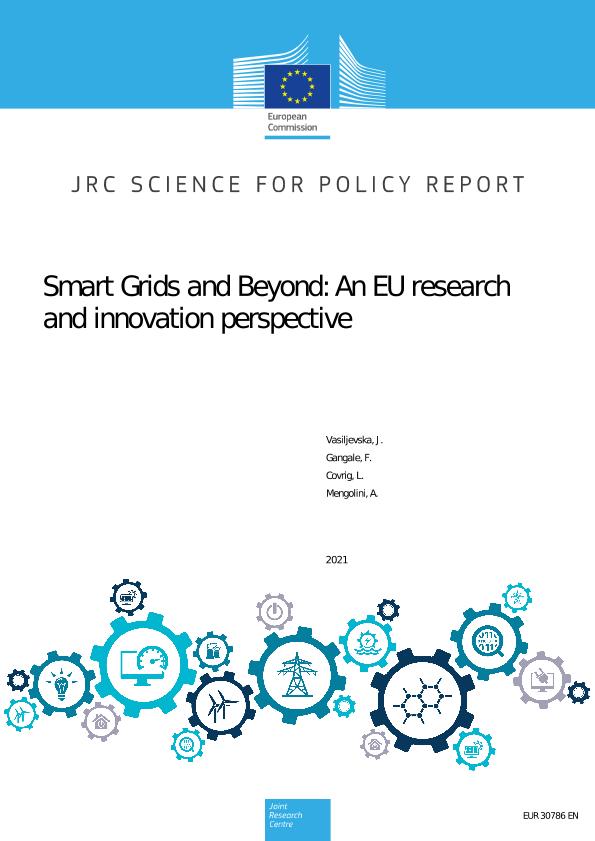
2021 - Smart Grids and Beyond – An EU research and innovation perspective
This report presents an overview of EU research and innovation (R&I) projects in the field of smart grids funded by the last two framework programmes for R&I (the seventh EU framework programme for research, technological development and demonstration activities and Horizon 2020) and by the competitiveness and innovation framework programme. R&I projects can play a pivotal role in addressing and investigating the technological, regulatory, economic and social challenges of the energy transition, and analysing them can help to understand the direction Europe is taking and inform current and future policy developments. The report looks into projects addressing the need to modernise the electricity grid and to better integrate the behaviours and actions of all connected users. In this sense, it goes ‘beyond smart grids’ strictly speaking, and looks at the energy transition beyond purely technological solutions. The analysis of the projects surveyed provides an overview of the main trends; of the main areas in which projects intervene; and of the organisations that participate in the projects as well as synergies and collaborative links between the organisations.
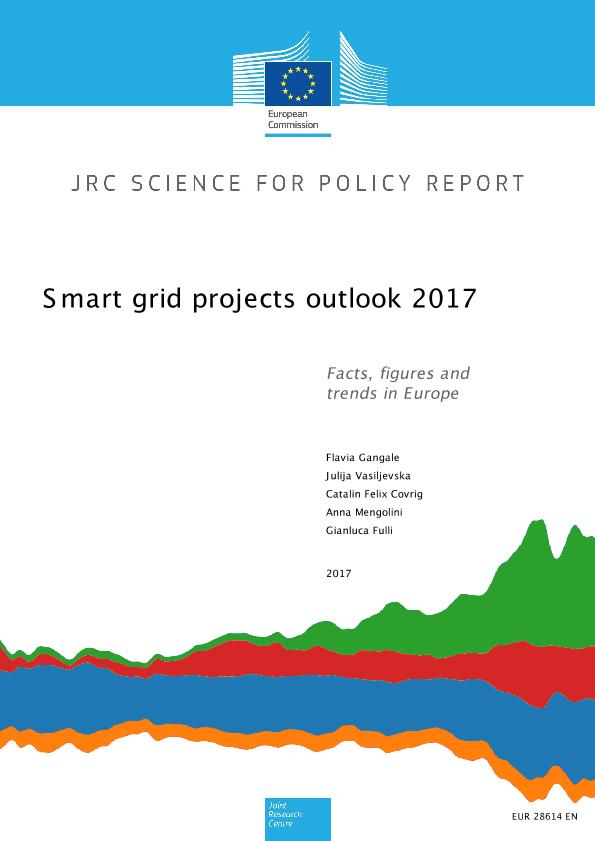
2017 - Smart grid projects outlook 2017: facts, figures and trends in Europe
The 2017 Outlook offers a snapshot of the state of play and of the latest developments in the field of smart grids in Europe. The analysis is based on a database of 950 R & D and demonstration projects, totalling around EUR 5 billion of investment. It aims to foster knowledge sharing and to inform future policymaking.
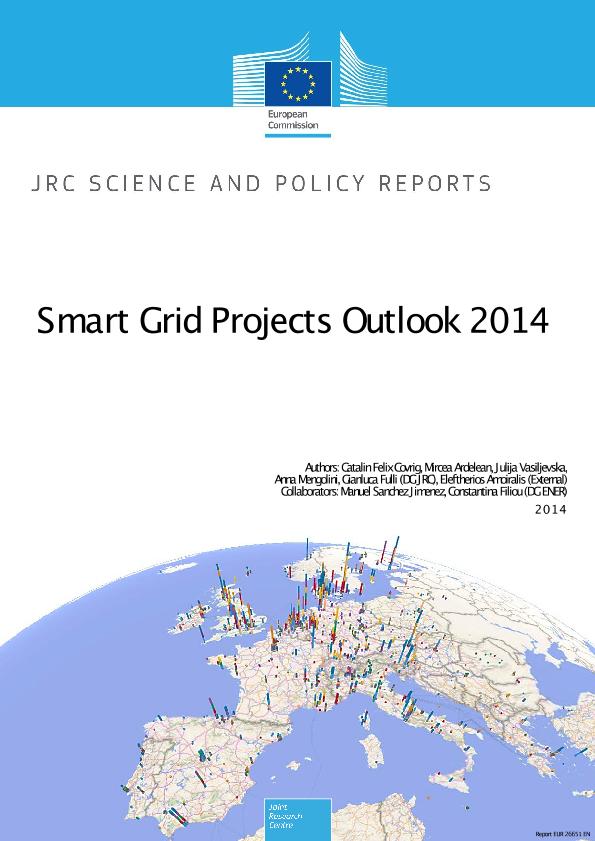
2014 - Smart Grid Projects Outlook 2014
Smart grid projects are playing a key role in shedding light on how to move forward in this challenging transition. In 2011, therefore, the JRC launched the first comprehensive inventory of smart grid projects in Europe to collect lessons learned and assess current developments.
The participation of project coordinators and the reception of the report by the smart grid community were extremely positive. It was therefore decided that the project inventory would be carried out on a regular basis so as to constantly update the picture of smart grid developments. This study is the 2013-2014 update of the inventory started out in 2011.
The JRC’s 2013-14 Smart Grid database contains 459 smart grid R&D and D&D projects from all 28 European Union countries. Switzerland and Norway were studied together with the EU28 countries since they are present in a substantial number of projects with EU countries. Other 17 non EU countries are represented in the inventory by their participating organisations. The total investment of the smart grid projects amounts to €3.15 billion.
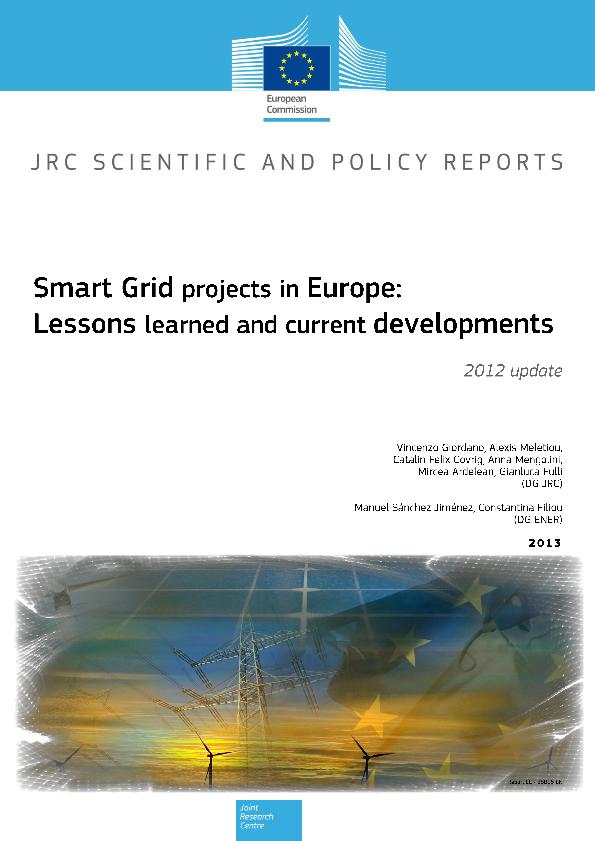
2013 - Smart Grid projects in Europe:Lessons learned and current developments 2012 update
This study is the 2012 update of the inventory carried out in 2011.
A new on-line questionnaire was put on-line in March 2012 and projects were collected until September 2012. In parallel we have performed an extensive and scrupulous search of projects information through web research and cooperation links with European research organizations.
The resulting final database is the most updated and comprehensive inventory of Smart grid and smart metering projects in Europe for 2012: it includes 281 Smart Grid projects and around 90 smart metering pilots and roll-outs. Smart Grid and smart metering projects will be analysed separately.
The core of our analysis will focus on Smart Grid projects. Smart metering development will be analysed only at aggregated national and European level and information from individual smart metering projects will be used only to support the analysis with concrete field information.
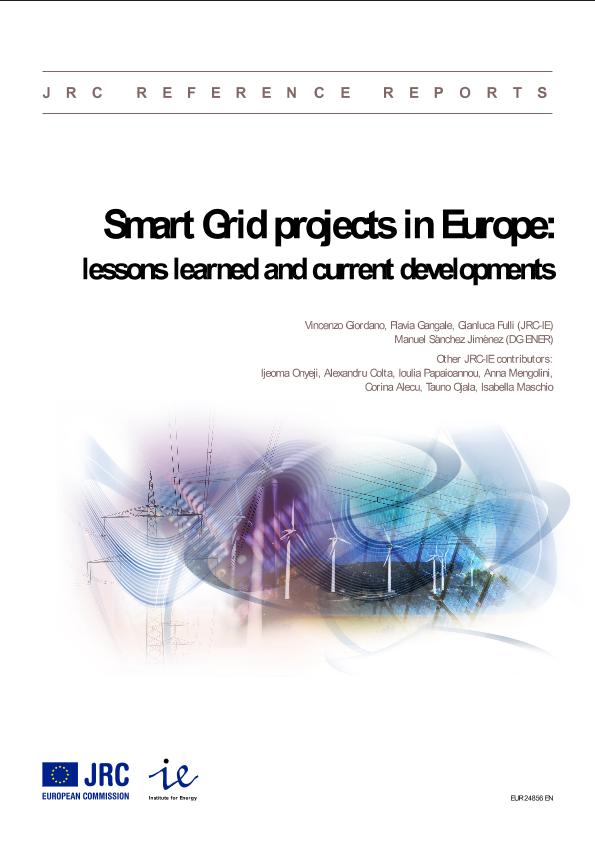
2011 - Smart Grid Projects in Europe - Lessons Learned and Current Developments
The main goal of this study is to collect a wide inventory of Smart Grid projects in Europe and use project data to support analysis on trends and developments. The report looks into several aspects of the Smart Grids landscape to describe the state of the art of their implementation, the emerging hallmarks of the new electricity system and the foreseeable developments. A key focus of the Report is to describe how Smart Grid projects address and respond to the EU energy policy challenges and to point out the main benefits and beneficiaries. Particular attention is devoted to identifying the most important obstacles to investments and the possible solutions that could help to overcome them.
